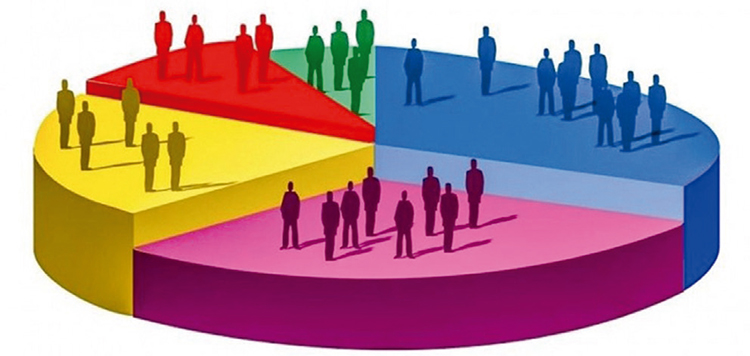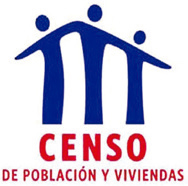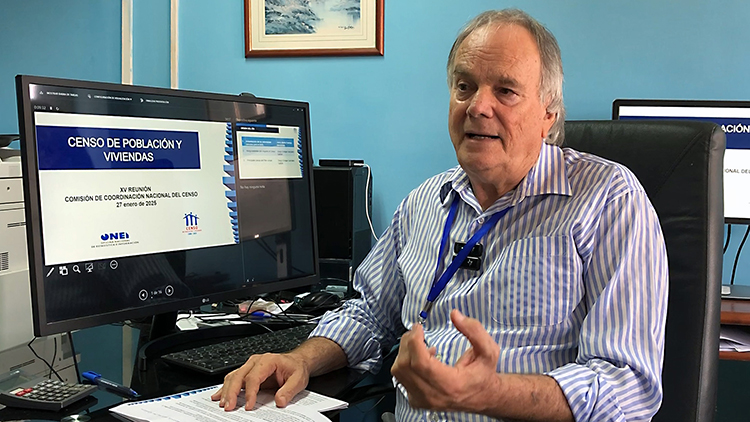![]() Cargando...
Cargando...
To what extent has the employment structure changed? What is the sociodemographic composition of the population? How many professionals and technicians are there? What is their internal and external mobility? Which social groups need more targeted policies? These and many more questions will be answered in the Population and Housing Census (CPV), currently in preparation in Cuba.
For the past 13 years, this statistical operation has not been carried out—its goal is to collect, process, and disseminate information on demographics and housing conditions, which is used to design strategies and social programs in a coordinated way
This is how Diego Enrique González Galbán, Director of the Center for Population and Development Studies at the National Office of Statistics and Information (Cepde) and National Director of the Census, summarizes the complex machinery that has been set in motion in recent weeks. It will directly involve thousands of people and, more broadly, the entire society, which is committed to the accuracy and quality of the data provided, as well as to active participation. In addition to social workers, other citizens—whether employed or not—will also take part.
He emphasizes that Population and Housing Censuses (CPV, in Spanish) are essential for shaping projections and are recommended every 10 years. However, this frequency is not always feasible due to the high costs involved, including paper and equipment. That’s why, in this century, alternatives to the traditional method have been introduced, aiming to reduce expenses.
Just one example: the usual method was to use paper questionnaires. For the last census conducted in Cuba in 2012, 4.5 million copies were printed—not including the rest of the documentation, which consisted of more than 12 instruction manuals.
In Europe, this statistical operation is carried out by integrating digitalized administrative record systems, while in our region, some countries use a combination of methods—online, by mail, or by phone, as in the U.S.—though these often suffer from very low response rates. The most widespread method,» he explains, «is collecting information through mobile capture devices—tablets, phones—which is the one we are now adopting. It’s a cleaner technology in terms of avoiding errors, since the data is entered digitally.
Counting, not legalizing
There’s no need to wait for the Population and Housing Census (CPV) to start working with numbers. The current Census Register involves around 3,800 enumerators, nearly 1,600 areas to be surveyed, and thousands of mobile devices to record information from this initial stage, which began on May 19 in 39 municipalities across the provinces of Havana, Cienfuegos, Sancti Spíritus, Ciego de Ávila, and Camagüey, with other provinces gradually joining in.
In this phase, along with cartographic updates, statistics are being gathered on the entire economic and social infrastructure of the country: facilities providing any kind of service such as public health centers, restaurants, bodegas, and stores; economic centers like industries and small and medium-sized enterprises (SMEs); recreational spaces like parks and sports centers, and even housing units or accommodations.
González Galbán emphasizes that each enumerator works alone and carries an ID badge with the logo of the National Office of Statistics and Information (ONEI). During their work, data will be collected on buildings and people, protected by the confidentiality established in Decree Law No. 98, which states that such data may only be used for statistical purposes.
We planned the Census Register to last two months, although it may take a bit longer depending on the characteristics and location of the areas. Afterward, we’ll carry out the Census Trial, which will last 60 days, in the municipality of Santa Cruz del Norte in Mayabeque, chosen because it has conditions similar to those found throughout the country—such as mountainous zones and both dispersed and concentrated populations. The national CPV team and the 15 provincial heads, along with the head of the Special Municipality of Isla de la Juventud, will be there. Censuses are highly conceptual, and it’s essential that everyone involved fully understands the exact terms and procedures.
A portrait of the Cuban population
Questions related to housing aim to gather information such as the type of housing unit, how many rooms are used as bedrooms (to assess overcrowding), how and how often water service is received, what fuel is most commonly used for cooking, and the source of lighting. These are included in the first part of the census questionnaire, which also explores elements that contribute to quality of life, such as the availability of household appliances and access to the internet. There will also be questions to sociodemographically characterize each resident, including age, sex, skin color, highest grade completed and educational level attained, as well as marital or relationship status—whether married, divorced, partnered, or single.

Our interviewee informed us that the plan includes investigating the relationship to employment and the profession or trade, the sector of the economy in which the person works, and the so-called ‘commuter mobility’—to determine whether the worker or student needs to travel outside their municipality for those activities.
The answers to this broad and diverse questionnaire will come from the Census Survey, the final stage of the recently launched process, in which effort and intellect will come together to ensure the conditions that allow Cuba to declare itself ready for its nineteenth Population and Housing Census.
The Public Should be Aware That:
 Permanent resident: A person is considered a permanent resident if they live in a housing unit where they usually sleep and keep their belongings.
Permanent resident: A person is considered a permanent resident if they live in a housing unit where they usually sleep and keep their belongings.
Housing units: These are buildings or structures where people reside, which may include private homes (individual houses, apartments, shared housing); collective dwellings (shelters, convents, military camps, nursing homes, psychiatric hospitals); or workplaces (where the worker is authorized to sleep and store their belongings).
Head of household: This is the person recognized as such by the other household members. They are not necessarily the one who earns the most, owns the home, or appears as the head of the consumer group in the ration book. Likewise, they don’t have to be the one who answers the census questions.
The census does not grant or remove legal ownership of a dwelling. The information collected is solely to determine where people live or reside. A person may or may not be the property owner, but they are considered a resident if they sleep and keep their belongings at that location.
If someone is taking care of a property owned by someone else and they sleep and store their belongings there, they are considered residents of that place. If they are only caretakers and do not sleep or keep their belongings there regularly, the dwelling is classified as vacant.
